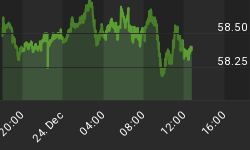The 48K seen in the ADP National Employment report on private payrolls for July, was well below expectations of 100K following 150K in June and 98 in May. Considering the ADP's 66% track in predicting the direction of (up or down) in private payrolls reported by the US Department of Labor, today's disappointing figure causes us to downgrade our forecast for non farm payrolls to 80K from June's 132K. Consensus of forecasts currently stands at 124K.
New revelations of losses in a Bear Stearns' hedge fund reported overnight are the latest catalysts to rattle Asian and European markets, spurring fresh gains in the Japanese yen across the board, while shedding losses in the high yielding currencies of the Aussie, Kiwi, sterling and Loonie. In days when currency traders are closely watching equities, the intra-day correlation between the rising yen and falling equities is playing an increasingly vital role in repricing risk in FX markets.
Market volatility-as measured by the VIX index surged 60% in the last 3 days, reaching 24, the highest since May of last year (was highest since February 2003).
The S&P500 closed 7 points above its 200-day moving average (1450), a level not breached since August 2006. Interestingly, even during the Feb-Mar equity sell-off, the S&P500's 90 point plunge did not reach its 200 day MA. A breach below 1450 would increase risks of further capitulative selling as credit spreads widen further and limited access to credit reduces on liquidity. It is important to remind traders that recent rallies in US equities have only largely taken place during days of no economic data.
The manufacturing ISM came in at a 4-month low of 53.8, while its employment dropped to 50.2 from 51.1, also the lowest in 4 months. While the new orders index remains at a haughty 57.5, the employment situation in the sector remains in the red. Friday's release of July payrolls will serve as a reminder of the jobs recession in manufacturing, where payrolls have been in the red for the last 12 months.
Fed Funds futures are now seeing a 100% chance of a 25-bp rate cut by end of Q4 this year. This shift in futures markets' expectations is in line with our Fed forecasts established throughout the year on the rationale that market contagion and prolonged housing weakness will transmit into the overall economy. Fed Chairman Bernanke's inflation-targeting credentials may act as an obstacle to such a policy shift, but as we indicated earlier, the downward impact of cyclical economic slowdowns has consistently proven itself on price growth.
August 2007 FX Forecasts | |||||
| CMC Markets US | Current Rate* | End of Aug 2007 | End of Oct 2007 | End of Jan 2008 | End of Jul 2008 |
| EUR/USD | 1.3697 | 1.3700 | 1.3800 | 1.3900 | 1.4200 |
| USD/JPY | 119.18 | 116.00 | 115.00 | 117.00 | 115.00 |
| GBP/USD | 2.0354 | 2.0100 | 2.02 | 2.0200 | 1.9990 |
| USD/CHF | 1.2031 | 1.1879 | 1.1740 | 1.1700 | 1.1600 |
| USD/CAD | 1.0632 | 1.0450 | 1.0300 | 1.0300 | 1.0100 |
| AUD/USD | 0.8574 | 0.8350 | 0.8300 | 0.8400 | 0.870 |
| * As of Jul 31, 2007 | |||||
USDJPY seen reaching 115.60 low by end of month
We expect to USDJPY to drop as low as 115.60 this month amid our expectations for:
1) Further US and global equity losses saddled by credit concerns;
2) broadening weakness in the US consumer;
3) increased probabilities of a Fed easing by end of year;
4) Yen repatriation ahead of end of first half of Japanese FY (August is usually negative month for USDJPY);
5) Anticipation of normalization of interest rates by the Bank of Japan.
Aside from these fundamental factors, the technicals on the weekly chart suggest not only deteriorating momentum but also ample downside remaining as seen in the Moving Average Convergence Divergence measure.
Today, USDJPY lost another 100 points to a fresh 3-month low of 117.63. The 115.60 level marks the 38% retracement of the rise from the 2005 low (101.62) to this year's 41/2 year high of 124.08. The level also rests above the trend line support extending from the 101.62 low. On a shorter-term basis, we expect any USDJPY gains to be capped at its 200 day MA of 119.20 and 119.60. Interim support stands at 117.20.

















